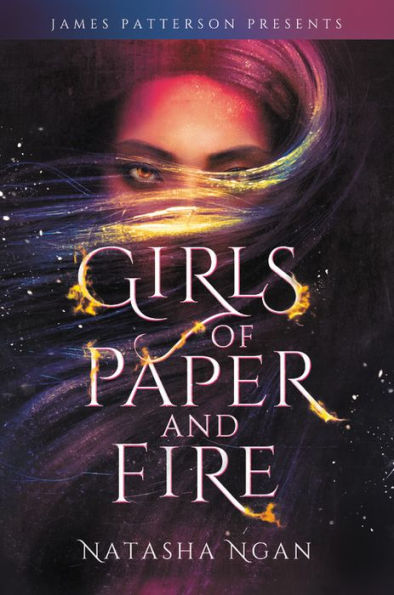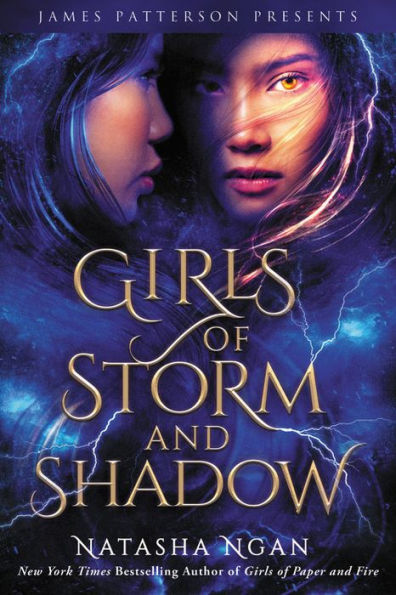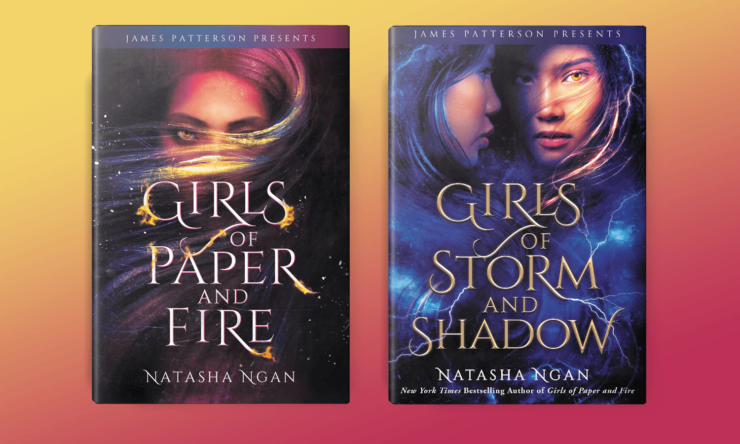Natasha Ngan’s latest stunning young adult fantasy series is set in the historical Asia-inspired Kingdom of Ikhara. In the first book, Girls of Paper and Fire, we learn about the three castes: Moon (full animal demon), Steel (half animal demon, half human), and Paper (full human). Every year the brutal Demon King selects eight human concubines called Paper Girls. The girls have no say in the matter, as Lei learns first hand when she’s kidnapped and taken to the Hidden Palace. There she falls in love with one of her gorgeous fellow Paper Girls, Wren, the daughter of one of the most powerful Paper clans who long ago allied with the demons against humans. An impulsive act of resistance lands her in the center of a vast conspiracy of secret revolutionaries.
By Girls of Storm and Shadow, Lei and Wren are on the run after a failed assassination attempt on the Demon King. Wren’s father sends the girls and their motley crew of human, shaman, and Moon caste rebels on a quest to secure alliances from important demon clans, but soldiers and spies dog their heels. As the bodies pile up and long-held secrets spark painful betrayals, Lei and Wren’s relationship is strained. Wren isn’t who she seems, but neither is Lei…and one final act of misplaced trust could send her right back into the claws of the Demon King.
Not many writers could build a structure around sexual assault solid enough to prevent it from overwhelming the reader, veering into the lurid, or demeaning or degrading the characters who experience it. Fortunately, Natasha Ngan is one of them. She and her characters are clear from the very beginning about the realities of being a Paper Girl. The reader and the characters both enter the narrative with eyes wide open. There is enough build up to the event and character development with Lei that when the Demon King finally does come for her, the reader is prepared for it and trusts that Lei will survive him.
But even her strength isn’t perfect. Lei is haunted by nightmares and suffers from PTSD from the abuse. As she recovers, she turns to alcohol to drown her terror. Her survival process is studded with missteps and struggles, but again, that makes her even more admirable. There’s nothing less relatable than a hero who does everything right, has a positive attitude all the way through, and comes out the end better than before. The version of Lei who was taken to the Hidden Palace at the beginning of Girls of Paper and Fire is very different from the Lei who sets off on her quest in Girls of Storm and Shadow.
Buy the Book


Girls of Paper and Fire
Ngan also shows how other girls deal with their assaults. Some girls simply accept it as a fact of life, a chore they must get through. They don’t enjoy it but they don’t resist either—they can’t. They’ve seen what happens to girls who do. One girl convinces herself she and the Demon King are in love because the truth of what is actually happening is way too difficult for her to bear. And then there’s the girl whose family have thrown her to the wolves and demand she smile as they tear her apart. She cannot let herself hate what’s being done to her because, like the last girl, it might break her entirely. So she lashes out like a cornered snake, terrified and angry and hurt and desperate.
While much of Girls of Paper and Fire is about experiencing and surviving sexual assault, Girls of Storm and Shadow is about what comes next. For Lei, it’s processing and finding a way to feel empowered again. For Wren, it’s revenge at any cost. Being a Paper Girl united Lei and Wren under a common goal—getting out and destroying the system. Now as warriors and rebels, their goals diverge, weighed down by intense emotional and physical turmoil and pressure from family and friends. What matters more: the mission or the people? In the first book they sided with “mission,” but now after everything Lei has seen and learned, her answer has changed.
Complicating matters is her romantic and sexual relationship with Wren. At its heart, the Girls of Paper and Fire series is a love story. Their love is forbidden, and not just because they’re enslaved to the Demon King. Where most young adult fantasy series would keep their lovers apart until the very end, this one pairs them off early on. We see their relationship evolve past the initial physical attraction and into something deeper and more real. The real threat to their relationship isn’t some overeager ex forcing a trope-y love triangle or the Demon King and his cruel agents trying to kill them, but themselves. One girl demands trust and complete honesty, something the other is unwilling to provide. No relationship can survive intentional and constant dishonesty, especially when what one person is covering up goes against the other’s sense of morality.
The reason why one girl keeps secrets from her girlfriend is the same reason why the angry Paper Girl I mentioned earlier feels like she has to not just permit but want the Demon King to assault her: the patriarchy. Female agency (or the lack thereof) underpins the entire series. Men don’t have a monopoly on violence in the series, but they are at the root of every violent act. Men have power or want it, and heaven help you if you get in the way of that.
Buy the Book


Girls of Storm and Shadow
Ngan also touches on intersectionality in a really interesting way. As Lei points out in conversation with a female Moon caste demon, men regardless of caste are always finding ways to take or keep power and often act out petty power grabs against women simply because they can. Women are second class citizens in this world, even Moon caste women. But for Paper caste women, there’s an extra layer of bigotry. Paper caste women exist in a state of intersectional oppression. They aren’t just women, aren’t just Paper caste, but Paper caste women. Fold into that the degradation of sexual exploitation and how their male dominated society sees prostitution solely as a means of male fulfillment and you get Paper Girls, the lowest of the low, the most vulnerable and easiest for men of any caste to abuse.
In her rich, evocative series, Natasha Ngan takes readers on a fantastical journey through a historical fantasy version of Asia. With its powerful themes of female agency, survival, and the intersectionality of racism and sexism, Ngan forges a heated and engaging romance set against a backdrop of revolution. Girls of Paper and Fire starts the story off with a bang while Girls of Storm and Shadow pushes the characters to the brink. I genuinely have no idea how the series will end or whether it will be a happy one for Lei and Wren, and as someone who reads a metric ton of YA speculative fiction it’s rare that I’m left uncertain. Wherever Ngan takes her readers, you can bet I’ll be right there with them.
Girls of Paper and Fire and Girls of Storm and Shadow are available from Jimmy Patterson Books.
Alex Brown is a teen services librarian by day, local historian by night, author and writer by passion, and an ace/aro Black woman all the time. Keep up with her on Twitter and Insta, or follow along with her reading adventures on her blog.










